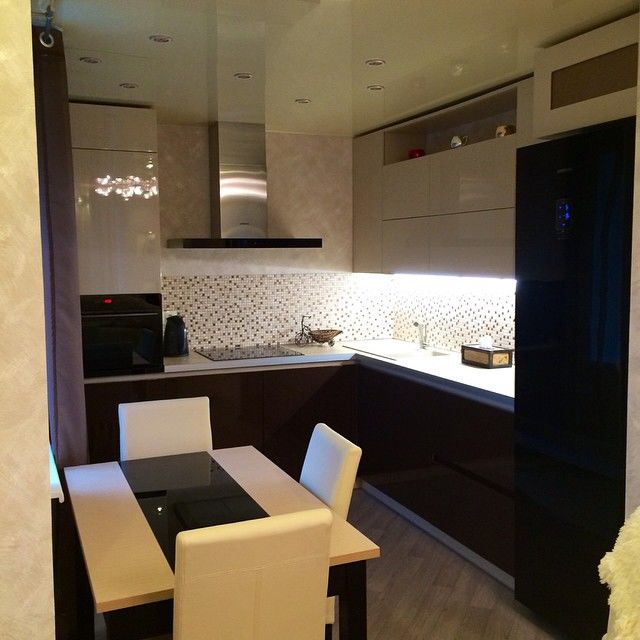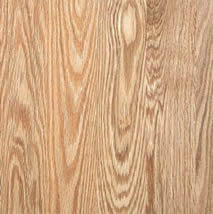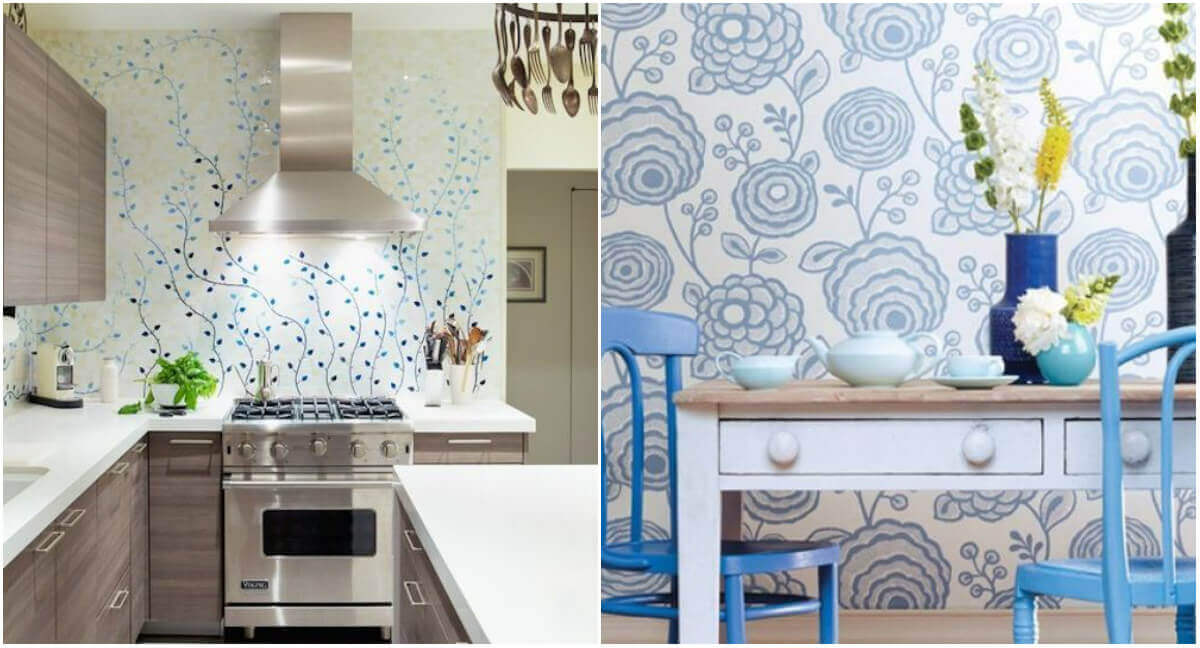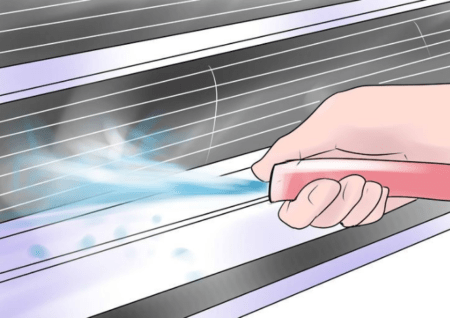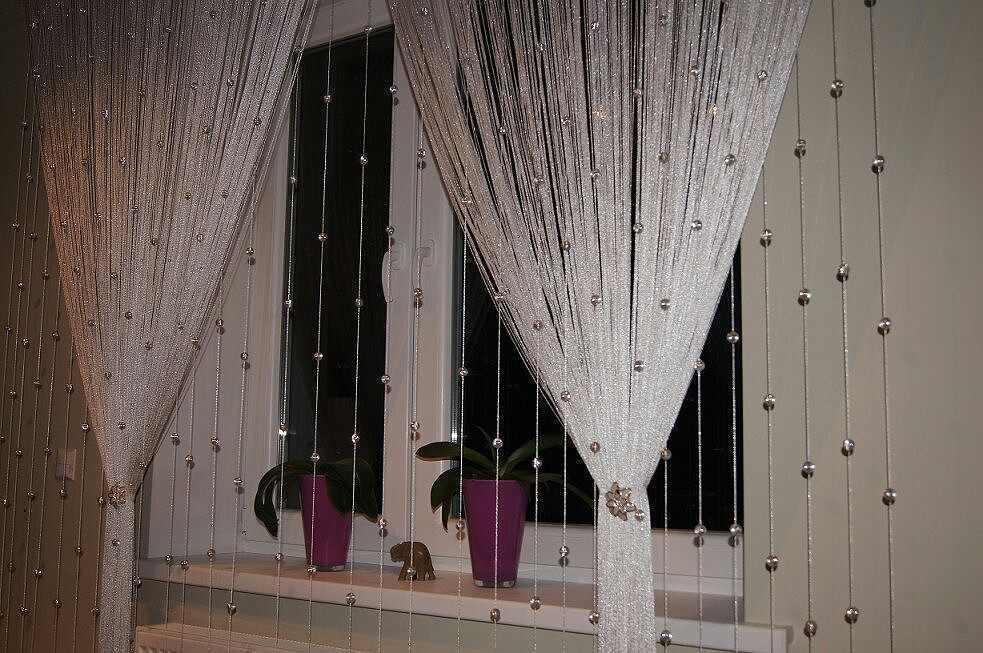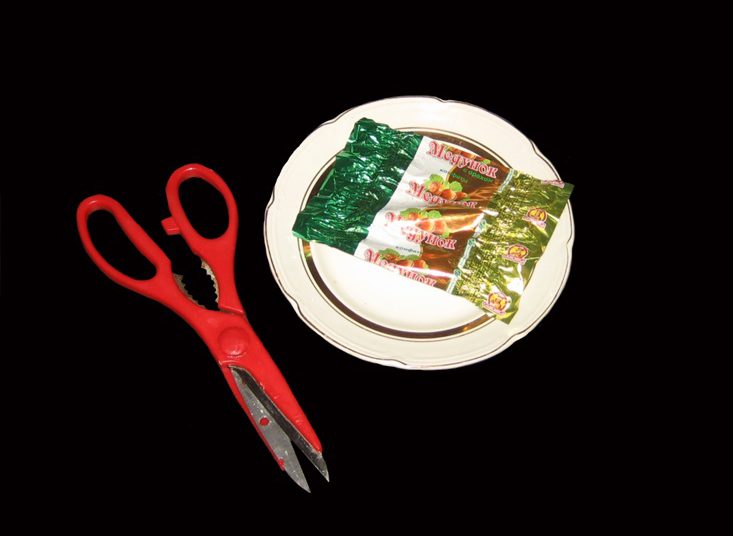
Flower Hill. How to make an alpine slide in the country with their own hands
The picturesque landscape of the Alpine Mountains inspired gardeners to create alpine slides, which traditionally consist of a combination of stone with mountain plants.
Relatively recently, in the landscape design replaced the classic flower beds, rabatkam and gypsum sculptures came new types of decoration of the site - rock gardens. They are satisfied in the rich estates and suburban areas, in urban gardens and squares, on lawns near offices and in the territories of restaurants. Properly and tastefully chosen stones and plants will create a zone of luxury, aesthetics and peace, even on the most modest piece of land near the country house.

Alpine hill densely planted with plants strikes the eye with its bright, rich colors
Being a peculiar and very time-consuming decoration of the landscape, rock gardens seem to be complex in execution and inaccessible elements of the decor. However, if you understand the technology of creation, the alpine slide in the country can be arranged without the involvement of expensive designers.
A piece of the Alps at your cottage
In developing the design of alpine slides, you need to bear in mind that this is an imitation of rocky natural sites. So, the basis of the composition should be the stones and creeping low plants characteristic of high mountain ranges. And the definition of "hill" dictates the general form of rock garden - the hill with the required elements: the base, slopes and apex.

Rock garden - "highlight" that can instantly transform the look of a garden landscape
There are several variants of rock gardens, which repeat with their views different parts of the highlands:
- rock cliff - a pile of practically bare large boulders with a minimum of plants in niches and "pockets";

The combination of functionality and decorative features: stone steps and rocky rock garden

Larger plants are planted on the tops of the rolling pin, emphasizing the dynamics of the height difference
- the mountain slope is a complex high composition of stones of different sizes and with a wide variety of creeping and low-growing plants;

To design such a rock garden use dwarf plants, as well as large boulders, imitating fragments of rocks
- valley in the mountains - large stones, partially protruding from the ground, surrounded by abundantly flowering ornamental plants;

The natural landscape allowed a small effort to create a blooming stone hill
- the gorge is the most complex in execution, but also the most spectacular type of rock garden, which can be placed in a natural trough, having framed the slopes with stones and having landed representatives of the rock flora.

Neatly folded stones in the shape of a semicircle in combination with flowering plants - a spectacular kumama in your yard
A separate species is considered rockeries - a garden of stones, which are the main "actors", in contrast to the rock garden, where the stones serve as a backdrop for plants.

As a plot for the creation of rock aquarium fit any landscape of the area, including absolutely flat soil
How to make an alpine slide on the plot?
If you have firmly decided that the alpine slide created by your own hands will become the decoration of your garden - step by step instructions will give you the opportunity to avoid blunders and get the desired result. Before you start, sketch a sketch of rock garden - this will help you decide what area it will occupy, what configuration to have, and how many tiers you will be doing on it. You can even roughly estimate how much an alpine slide will cost you - a scale scheme will help you calculate how much and what stones you will need, how much drainage, sand and soil you will need to prepare. It is necessary to do the scheme in relation to the terrain in order to use all the advantageous moments of the already existing landscape.

Creative decoration of rock gardens - a clay bowl with plants
- Determining the place for the future of rock garden, do not forget that you will need to look at it - choose the most favorable angles. Also, think about it - you might want to spend your free time near it. Then you will need an adjacent flat platform with paths, a place for a table and a hearth.

The path from the rock garden leads directly to the recreation area

Cozy corner to relax in the "rock garden"
- Planted plants for the alpine hills will need solar heat - it means you need to orient the slopes to the south and east.
- Very interesting visual effects are obtained when using natural irregularities of the relief - the elements of the decor inscribed into the natural landscape will be a great addition to it.

Spectacular alpine slide with a small pond

This is not an imitation of the landscape, but simply an artistic composition of asymmetrically placed boulders with paths between them and plant compositions.
- The next step is to transfer your circuit to the site. The markings should be made with the help of a rope or using the contrasting material - sand, lime. This will allow you to look at the alleged place of rock garden from the side. You may decide to change its configuration somewhat in accordance with the relief.

The rock garden serves as a bright garden decoration, standing out against a green lawn.
- Having approved the choice of location, you need to prepare the site for laying stones. The soil, mostly consisting of clay or chernozem, will have to be drained, sandy soils do not need such preparation. For drainage, the ground is taken out to a depth of at least 30 cm, the foundation pit is filled with building materials of large fractions, rammed and covered with removed soil flush with the surrounding earth. To seal the loosened soil shed it with water.

A miniature rock garden with dwarf plants, placed around the perimeter of the terrace, will add individuality to your recreation area.

- The largest boulders are laid along the perimeter of the prepared site. If necessary, they can be buried in the soil - then they will have a more natural look. The inner space is filled with soil, which will become the basis for the next tier, as well as the habitat for plants.

The composition of stones, located from the main facade of the house, a great addition to the image of your home
- Retreating the estimated distance from the first row, put the next chain of stones, while maintaining the desired configuration of rock garden.
Board! Laying large stones, leave free space between them, which will be filled with soil - planted plants will need space for the development of the root system.
- After completing the required number of tiers, make out the top. To do this, you can lay one large stone, or use several small, folded pyramid. This will prevent soil erosion, as well as complete the composition.

It is better to start work on laying a rock garden in the fall, then by spring the soil piled between the stones will sit down and it will be possible to fill all the voids formed. In addition, before planting, you will have the opportunity to make recent adjustments in the placement of stones.

Vertical blooming alpine composition creates a romantic mood

Alpinaria retaining wall - a new salvation from the "boring" walls
Tip!The main rule - the rock garden should look decorative and beautiful, even without flowers. Stones should harmoniously and balanced create a sustainable and extremely natural composition. The less symmetry in it, the more organic it will look.
Homeowner's Pride - DIY Alpine Hill
The implemented step-by-step instruction of the alpine slide will give you the opportunity to create on your site a real masterpiece of landscape design. And in order to become immaculate, we will reveal some secrets that will help you in your work:

Mini-rock garden in a flower bed is very relevant for small yards, where there is no room for standard stone compositions

To create a miniature rock garden, you only need dwarf plants, pebbles and a terracotta pot
- Stones for alpine slides need to pick the same type, the same breed. Then the rock garden will look very natural.

Rock garden with a pond, decorated with stones of approximately the same ofrmy

High hill, folded with stones and greenery, can serve as a fence area
- The size of the stones should correspond to the area occupied by rock garden - the larger it is, the larger the boulders can be used to fill it.
- Picking up flowers for an alpine slide, focus on the timing of their flowering. Maximum decorative effect is achieved with a continuous series of various blooming spots on the surface of the rock garden you create.

The minimalist version of rock gardens - simplicity that emphasizes the architecture in the background.
- The species composition of plants must be selected from undersized and evergreen varieties. Then the rock garden is not hidden behind lush greenery, and in the fall you do not have to choose among the stones of fallen leaves.
- For slides, you can take a couple of short conifers. They will fit perfectly between the stones without cluttering them. It is good to place creeping or cover species between them - green spots between the stones look very decorative. Flowering plants also pick low growth and small flowers.

The most popular plants for rock garden:
- dwarf fir,
- thuja,
- juniper,

Juniper looks great in a composition with stones
- cypress,
- cotoneaster,

When arranging an alpine slide, it is imperative to take into account the peculiarities of the landscape and, based on this, choose the appropriate improvement option.
- dryad,
- iberis
- rejuvenated
- rock crab,

Mountain waterfalls are also characteristic of the Alpine landscapes.
- carnation short stem,
- stonework

The saxifrage will add color accents to the alpine corner
A flower garden, created in the form of a full-fledged alpine slide, with correctly selected green plantings, will not leave indifferent even people far from floriculture. As a rule, the design and construction of an attractive combination of plants characteristic of highlands and uniquely selected stones are handled by professionals - landscape designers who have the necessary knowledge, experience and technical means to carry out the work. You should not despair, a simple alpine slide with your own hands, even a beginner flower growers, the main thing is your desire and patience, and the article will become a kind of instruction. The reward for the time spent and effort will be a small, but at the same time quite spectacular mountain landscape that adorns the garden or the dacha.
The publication provides an exhaustive answer to the question of how to make an alpine slide with your own hands, step by step on your site, without asking for help from specialists. Considered the distinctive features, features of the flower garden and developed practical recommendations on the choice, location of stones and green spaces of rock garden.
The first mixed compositions of wild-growing exotic plants and stones appeared in Europe in the second half of the 18th century. The desire to recreate the natural uniqueness of the wild nature, determined the choice of green spaces - preference was given to the representatives of the flora that were not cultivated by breeders. The plants of the mountainous alpine regions were perfectly suited for this purpose. The meadows, located at a height of 2 to 3 thousand meters, were abundant in various undersized vegetation, including ground cover species forming “grass cushions”. Slightly lower, at an altitude of 1.5 to 2 thousand meters, century-old coniferous forests grew in the subalpine belt. The brought plants were distinguished by their particular unpretentiousness and frost resistance, since rather severe climatic conditions are characteristic of mountainous areas - the possibility of frosts is not excluded during the year.
 Rockery
Rockery  Alpine Hill
Alpine Hill
So, thanks to the natural habitat of plants - the Alpine ridge, artificially created compositions of greenery and stone blocks got their name. The design of the alpine slide is fundamentally different from other areas for the cultivation of flowering plants, and a feature not only in the presence of stones. For example, rockeries (rocky hill), also suggests that a significant part of the soil surface is occupied by relatively large stones, arranged in a chaotic manner. The principal difference between these two types of flower beds is that the landscape composition of rock garden imitates a mountain landscape, with the center of a group of stones, surrounded by small platforms (terraces) with plants typical of mountainous terrain.
It is the correct, harmonious selection of plants - flowering, shrubs, conifers and their successful composition on stone terraces that distinguish the alpine hill from other flower gardens.
Technology create alpine slides do it yourself
Depending on the occupied area, the rock garden can be the most varied - starting with miniature fragments occupying no more than 1 square meter, ending with the largest, located on dozens of square meters. The size of the flower bed should be proportional to the size of the plot and depends on the overall landscape. Directly from the area of the alpine slide depends on its height - on a small space does not make sense to imitate the mountain slopes. As a rule, in mini-rock gardens with an area of up to 3 sq. M, elevation is not erected, with an area of 6-10 sq. M - simple alpine slides, the height is allowed up to 1 m. process at logical stages, will help to better comprehend and plan an independent device rock garden.
Video "Alpine hill with their own hands"
Site selection and planning
When thinking about how to make an alpine slide with your own hands, it is important to understand that the only requirement that it must meet is an imitation of the mountain landscape and its specific vegetation. And how to achieve this, what tools will be needed, what plants to pick up - depends only on your design and on the specific backyard. You can build an alpine slide with your own hands in almost any part of the garden, but most often it is placed near the front side of the estate. If you wish to grow light-loving species, the chosen place should be well lit. Regardless of the location, the stone composition should be in harmony with the general style of the backyard, the main buildings and be easily visible.

The variety of the composition created largely depends on the terrain features. The ideal option is the presence of natural irregularities or a steep slope on the backyard area, which will make it possible to build tiered terraces in harmony with the overall design. If the terrain is flat, the mound with the stones will have to be created artificially. After the final choice of location, it is necessary to determine the size and total area, which is planned under the rock garden. To present the future construction directly on the ground, wooden pegs hammered along the perimeter and a string stretched between them will help.
Remember
In order for the flower garden not to be overwhelmed by its size, professional designers recommend to proceed from the following ratio - the total area of the site (0.6 hectares), the alpine slide area (6-10 square meters), height (60-100 cm).
Selection of stones and earthworks
More often than others, when creating a rock garden using their own hands use granite, sandstone or limestone, but it is advisable to choose one type of stone, maximum two. Basic Required qualities: durability, moisture resistance, durability and naturalness. It is important to remember that our goal is to recreate a miniature copy of the natural mountain landscape, so it’s better to discard artificial materials.

Simple alpine slide
For the design of stone protrusions, granite is better suited, and if necessary, the construction of terraces or paths, pay attention to the layered sandstone slabs.
It is not necessary to supplement the mountain composition with ideally smooth boulders, if the construction of a landscape waterfall is not foreseen.
The “old” stones with traces of destruction, cracks and chips look very impressive, and in order to emphasize naturalness, they are selected in different sizes and colors.
Creating an attractive rocky flower garden with your own hands requires a long and painstaking preparatory work, including:

Simple alpine slide do it yourself
- ground preparation,
- creation of a drainage layer,
- selection and layout of large stones,
- cooking earth mixture
- planting vegetation,
- layout of small stones.
To proceed directly to the construction of an alpine slide, preferably at the end of spring or in the first half of summer, in this case, by the time the plants are planted in autumn, all the works will be guaranteed to be completed. Planning time, do not forget that for the natural shrinkage of the soil will take 3-4 weeks. Before the start of earthworks, it is recommended to draw the most detailed plan of the mountain composition with the exact indication of the location of large stones, terraces, paths and green spaces and their sizes.
The first step of practical work is excavation from the inside of the rock garden marked on the ground. It is enough to dig a ditch with a depth of 20 cm, while the roots of weeds are carefully removed from the removed fertile soil layer.
The second step - the device of the drainage layer. As a drainage, you can use crushed stone fraction 20x30 mm, expanded clay or broken brick, the thickness of the created layer is 15-20 cm. A planting mixture prepared from excavated soil, peat and broken stone mixed in equal parts is poured over the drainage cushion.
The next step is the most responsible - the installation of large stones and, if necessary, layered slabs on the part of the perimeter to create terraces. Depending on the height of the terraces being created, the plates can be held together with cement mortar or poured with earth with the addition of clay.
As a rule, when creating a simple alpine slide with your own hands, 2-3 drops in height are arranged - horizontal or inclined terraces of different levels. On them, besides planted plants, small stones are laid out in a chaotic manner, preferably of the same type as the main large ones. Free space between the stones is left as much as is necessary for planting groups of plants. Remember, it is important not to overdo the latter when creating a mountain composition. Try to avoid any symmetry and the same distances - a small man-made landscape should be as natural as possible. After filling the sites with a soil mixture and the completion of the construction of stone elevations, the finished structure gives time for shrinkage.

Types of laying stones for alpine slides
Selection and planting of plants
To create an original and spectacular mixed composition of stones and greenery, you have a fairly wide choice - perennials, annual flowers, shrubs and conifers. When choosing plants for an alpine slide, remember that you are creating exactly the mountain landscape, with vegetation characteristic of difficult climatic conditions. In this case, you are required to make a reasonable compromise between the desire to give the flower garden a colorful brightness and the need to preserve the naturalness and primitiveness.

- the main selection criteria are: matching plants with a mountain landscape, lack of care, decorative qualities, or a long flowering period;
- number of species. Given the small size of the composition, it is advisable to choose 3-4 species of flowering plants, 1-2 shrubs and 1 species of coniferous or woody;
- size of plants. For the alpine and subalpine zones, stunted, compact plants and creeping ground cover are characteristic. It is preferable to decorate the top and upper tiers with drought-resistant low-growing perennials;
- frost resistance. Picking up stones for an alpine slide and leaving a space for planting between them, it was assumed that the planted plants were able to endure harsh winters without additional shelter or digging;
- slow growth The choice of coniferous or woody species is desirable to be carried out from representatives who add no more than 10–20 cm in height per year and grow no higher than 1.5–2 meters.
It is desirable to plant the selected plants starting from the top, gradually descending to the lower tiers and finish the foothills. After planting, the soil around the plants, it is desirable zamulchirovat fine rubble. This will not only protect against weeds, but will also keep the soil moist.
Having the necessary knowledge for the construction of a simple alpine slide with your own hands and following the recommendations outlined in the publication, you can always create a small, but original and attractive mountain landscape on your backyard.
You are upset that, having a plot in the country, located on a hilly terrain or slope, it is not possible to create a beautiful landscape of its territory. Designers can cope with this problem. They argue that in this case an alternative solution would be alpine slidewhich is possible not only with the help of professionals, but also independently.

What is an alpine slide?
Alpine slide looks like a small area, which looks similar to the design of the Alps.
For the arrangement of such a site on the ground on their own will require:
- allotment located on a hilly terrain or slope;
- the presence of drainage (crushed stone and sand, broken brick and gravel);
- stones of various sizes and unusual shapes;
- vegetation to form a design.

As you can see, it is not necessary to spend large amounts of money to make a nice dacha area. It is important to understand how you want to see your territory, creative thinking and showing imagination.
Of particular importance will be the location of the landscape on the ground. Its decorative purpose and duration of existence depend on it. The hill should be set up in the place that is most illuminated by the sun.

Consider that a similar area will require care: watering, plant nutrition, and so on. Consequently, the cottage will need to be visited more often, so that the alpine slide does not lose its attractiveness, it looks aesthetic and does not cease to function.
For owners of the suburban area with an absolutely flat terrain there is the possibility of creating a horizontal alpine slide.

The choice of stones and vegetation to create such a site is the basic basis of the design, which requires a serious approach.
Initially decide what size you want to build an alpine slide. For a large plot, the use of boulders will be appropriate, for smaller areas, small stones with limestone will do.

It is necessary to stack stones in tiers of 3, but not more than 5. Experiment and fantasize: form different compositions and patterns of stones.
It should be noted that in early spring and winter the plants will not bloom, so the stones in these periods should look attractive without them.

Do not leave large gaps between the stones, so that the area does not look short, but you must provide a place for the location of flowers and ornamental shrubs.
Absolute symmetry in the arrangement of the stones is not appropriate, because the site should look more natural.

When choosing plants for the site in the form of an alpine slide, you should pay attention to the following nuances:
- plantings should grow year-round and meet the climatic conditions of the area so that they are not problematic to care for;
- it is important to form the harmony of the composition of the plants and keep their balance in relation to the type of stones;
- it is desirable to choose low-growing types of vegetation;
- the location of the hill on the south side of the territory implies a choice of flowers and drought tolerant bushes; for the hill on the east or north side of the plot, plants are placed that love moisture and shade.
Tui and spruces are most suitable for arranging, they will deliver to the site of attractiveness throughout the whole year.
Watch the video: What plants are suitable for alpine slides
Stop the choice on flowers of an unusual form and coloring, and also wild-growing vegetation which grows nearby in the wood and will be suitable to climatic conditions of the district.

Saffron and violet, poppy and forget-me-not, saxifrage, edelweiss and primula are suitable varieties of flowers. In addition, juniper, barberry, stonecrop and, oddly enough, a cactus will also look great.

- spring - bulbous plants;
- summer - most of the colors available;
- autumn period - autumn crocus;
- winter - varieties of coniferous trees.
Do not forget to weed the soil from weeds, so that they do not clog the plot and do not interfere with the growth of plants.
Plant plantations should be placed correctly: coniferous dwarf trees are in the background, low-growing original flowers should be planted in the foreground.

To understand how to equip the alpine slide by yourself, we recommend that you watch the video lesson. After reading it, follow the step-by-step instructions that we present below.
Stage 1 - site preparation
First, determine the location of the place for the alpine slide in the most suitable area near a sufficiently illuminated recreation area. Then proceed to the formation of the base. First you need to dig a small ditch around the entire perimeter of the future section 40-45 cm deep. Next, you need to tamp the soil and fill the drainage by 30 cm. Gravel, sand, construction waste, rubble will be suitable for this, or you can mix these components together.
Then the drainage is poured from above with a mixture of 15 cm of soil, sand, soil, peat and crushed stone. Mix ratio: 3 soil parts, 1 peat and 1 sand with rubble.
Soil for an alpine slide can be a composition that is sold in the respective stores.

Stage 2 - installation of stones on the site
We already considered the aspects of selection and placement of stones earlier in the section “Selection of stones for an alpine slide”. Let us turn to the scheme of their installation.
The best option for stones for such a site is limestone, as well as granite and sandstone.
Install stones required in the following sequence:
- At the base of the slides we place the largest boulders, which should be fixed with a composition of concrete or slabs. Then we put the soil on top, tamping it well. Note that the stones need to be deepened into the ground by 1/3 of their size.
- We rise above the level and similarly place smaller stones.
- Next, you need to plant the vegetation between the stones and cover it with a covering layer.
- At the end of the process irrigated alpine slide.

Stage 3 - refining the site with plantings
Initially, we moisten the soil in which the plants will be placed. Between the stones there was already a place for their landing. The main composition should consist of coniferous dwarf plantations and shrubs.
The next process is planting ornamental undersized flowers, which are placed in small holes and covered with gravel in the soil so that moisture can not evaporate quickly, and the weeds do not break up. We recommend planting the plants so that there are no empty spaces on the surface of the slide.
Vegetation should not cover the stones, because all design elements are significant.
After planting vegetation, the alpine slide must be watered.
Alpine hill do it yourself, step by step
Good luck in your arrangement!
How to make an alpine slide in the country with their own hands
Alpine Hill or rockeries - this is what is most attractive today in the private sector and suburban areas. The purpose of such stony gardens is not just a display of the flora of high mountains, but a composition evoking a sense of the natural landscape. Rock gardens are often part of the palace complexes. At first, only strange plants of highlands were always used. And later - and plants resembling mountainous, but not growing there. Stylistically, such rock gardens, apparently, can be attributed to the type of fantasy gardens.
Rock gardens are popular for their ornamental use. Now “rockeries” is an obligatory detail of household plots. After all, this is a small piece of wildlife, located in your garden. For such a masterpiece you need to pick up the place viewed from all sides. For a developed rock garden, sunlight is needed, so for it you need to select a part of the garden, which is located away from the existing buildings and large trees with a developed crown.
 Evergreens on the Alpine Hill
Evergreens on the Alpine Hill Well, if the hill will be located on the south side, near the recreation area. This arrangement will allow you to get optimal lighting, and you can admire the beauty of wild plants and rocky stones much more often. Also, choosing a place for a decorative flower bed, you need to pay attention to the quality of the soil. It is much easier to equip rock garden on sandstones, but if the soil is clayey, then additional work will be required to create drainage.
 The rock garden is a beautiful landscape composition of stones and flowers.
The rock garden is a beautiful landscape composition of stones and flowers. After arranging the base after a couple of months, you can start planting plants. For such facilities, you can use any type of plants that do not require particularly careful maintenance, tolerate bright sun and heavy rainfall. It is better to select slow-growing specimens for arrangement of rock garden in the country. Photos of finished compositions show how original and beautiful can look, for example, coniferous evergreens on such extraordinary beds.

Helpful advice! To the rock garden to enjoy the beauty of the whole year, you need to know the timing of flowering of various plants. The bulbous flowers bloom in the spring, in the fall mainly perennial specimens, and in winter they do not allow such a hill to be lost - conifers.
The design of the rock garden does not look bad:
- some species of spruce;
- juniper;
- mountain pine.
Such plants can be given any intricate form. They will perfectly complement the flower garden with their original appearance. Gardeners give such representatives of the fauna a conical shape or mow in the form of other interesting figures while creating an alpine slide with their own hands.
 Rock garden with bright colors
Rock garden with bright colors
From grassy plants for such slides fit:
- periwinkle;
- undersized carnation;
- thyme; nasturtiums;
- marigold;
- little bell and many others.
With a taste made slide will be an ornament to any landscape, let's consider how best to make it.
 Rock garden in the country, created by yourself
Rock garden in the country, created by yourself Alpine slide in the area: the creation of rock garden in the country
Choosing a place for slides. One of the priorities in the device rock garden - the correct choice of location. A rocky hill in the middle of a lawn will look deliberate. The most suitable place for rock garden can be considered a natural slope, embankment, ravine or, at worst, the shore of the reservoir.
 It is better to equip the hill on the south side of the site
It is better to equip the hill on the south side of the site Ideally, rockeries will be lit by the sun before noon. In the sun, the plants - mostly the inhabitants of the mountains - will be subjected to severe overheating and suffer from drought. With rare exceptions, plants also tolerate drying out of the soil as well as stagnant moisture. In the summer, the scorching midday sun, dry air and overheated soil are the most severe test for most of them.
 Rock garden is located on the slope of the site.
Rock garden is located on the slope of the site. At the site with a high groundwater level, it is necessary to arrange a drainage system to remove excess moisture, but usually there is enough 30-40 centimeters layer of drainage from broken brick, rubble or expanded clay. By the way, construction waste and garbage, including cans, can be embedded in the base of such a slide. In this case, you will kill two birds with one stone.
 Rock garden in the country with the use of small and large stones
Rock garden in the country with the use of small and large stones The next step is the choice of a stone. Of course, you can manually collect boulders in the surrounding fields, but at the same time you are unlikely to manage to pick up stones of one rock and one color. As a result, your slide will be an eclectic collection of stones, but not an imitation of the mountain landscape. In addition, from an aesthetic point of view, the accumulation of dissimilar stones, even grouped by color, is unlikely to decorate your site. The most important principle of the device rock garden - the uniformity of color, shape and texture of the stone. When choosing a rock, its chemical properties should be taken into account. Thus, a limestone slide will not be suitable for plants that prefer acidic soil.
 The rock garden is an ornament of a country site
The rock garden is an ornament of a country site The shape of the stone dictates the way it is laid. Rounded boulders look better on the crests of alternating waves. Lumps of irregular shape look good if they fit snugly together by mating faces and form an asymmetric group with rises and falls. If the hill will occupy only a few square meters, then it is best to do it from flat stone-slabs, which are laid in layers.


Alpine soil
And the last important moment in the device rock garden - the preparation of the land mixture. In the process of evolution, plants have learned to manage with the minimum amount of nutrients. Therefore, the land mix for them should not be too nutritious. You can use the usual garden soil mixed with sand in equal proportions with a little peat added. For plants that love acidic soil, the amount of peat can be increased, and for inhabitants of limestone rocks, it is good to add ash or lime. The creation of these slides is given a separate place in the works on landscape design.
 Scheme of planting on a hill
Scheme of planting on a hill Alpine slide creation rules in the country
Masters of landscape business developed plans and schemes, according to which the rock garden is being arranged. They take into account all the subtleties and nuances that help determine the location of the flower beds and the order of planting plants.

Provided that the hill will be viewed from any direction, the pyramidal form, having the highest point in the center, is best suited. To maintain symmetry in arranging a piece of wildlife is not worth it. The composition will look more original if all the elements are arranged abstractly. If the location of the rock garden is planned on an existing slope, then parts of the structure can be located on the same level.
 Rock garden on both sides of the garden steps
Rock garden on both sides of the garden steps The height of the hill should correspond to its area. For every meter of diameter, future clubs should foresee a rise of about 0.2 m, respectively, a hill with a diameter of about 4 meters should be at least 80 cm in height. Step-by-step photos on the creation of rockeries with their own hands are presented below.
Season for the arrangement of rock garden
When creating an alpine slide in the country, the scope of work is such that it practically does not depend on the season. That's just in the winter period to do this is not worth it due to weather conditions. But the best option is still considered early autumn, when gardener lovers have free time between harvesting and harvesting the site for the winter.
 Rockery on the summer cottage
Rockery on the summer cottage Note! Rock garden requires several months for natural shrinkage. After that, all the errors that were previously invisible will be noticeable. Before planting, these disadvantages should be eliminated.
If the planting of representatives of the flora is planned for the autumn, preparations begin in the spring. There are several basic rules for creating a rock garden with your own hands. The step-by-step instructions for creating a slide in the country, presented below, demonstrate all the details of this process.
Alpine slide in the country with their own hands
Usually amateur gardeners ignore the preparatory phase, setting up slides with their own hands. Photos of such not very successful compositions are presented in large quantities on various sites. Rock gardens, which represent the usual pile of stones, with plants planted between them, rather quickly lose their appearance and shape. Therefore, before arranging such a masterpiece, you need to carefully review the stages of work.
 In the arrangement of such a hill used large stones.
In the arrangement of such a hill used large stones. Drainage and soil for slides. Since the ground under the pressure of heavy stones used in the creation of rock garden, settles, should be done for the whole structure of the drainage base. It is also necessary for expensive plants, as it allows you to create an optimal microclimate for their development. As a drainage is often used:
- broken red or white brick;
- small gravel;
- small stones;
- rubble;
- construction waste of non-wood origin.
For its laying dig a pit. The depth of the pit will be approximately 1 meter with a total area of 8-9 m² alpine garden. These are about 3-4 bayonets of the usual shovel. Drainage fits into the pit and sheds well with water, after which it is covered with earth.
 The choice of place on the site and the device drainage future slides
The choice of place on the site and the device drainage future slides
Helpful advice!Each laid layer of drainage and soil is recommended to be carefully shed with water, as well as to carry out the final watering after all the plants are planted.
As an example of good soil, as mentioned above, can be a mixture of ordinary, cleared of weeds and debris, land with peat and ordinary river sand in equal quantities. In general, there are no special requirements for the composition of the base, because unpretentious plants are most often used for rock garden.
Selection of stones and their location. There are many types of stones that will look great on the garden plot. These include:
- granite;
- wild stone;
- limestone;
- sandstone and others.
 Placement of stones in rockeries on the summer cottage
Placement of stones in rockeries on the summer cottage Observing the following simple rules it is easy to create an alpine slide in the country with their own hands. Focusing on the photo of the location of the stones, you can choose the optimal design for any site.
- selected stones should not be the same size;
- it is preferable to pick up uneven in shape and structure of copies;
- the finished flowerbed should be asymmetrical as possible;
- selected stones should be of the same type.
 The location of the stones on the hill
The location of the stones on the hill Stone elements can be placed in different ways, it all depends on the owner’s fantasy. Professional designers offer several layouts of boulders. Quite original look large stone blocks located throughout the area of the rock garden, with smaller fragments scattered between them.
 Rockery in the country
Rockery in the country Someone would prefer to place the boulder, the most beautiful and interesting in form, on the top of the hill, while others, on the contrary, will place large specimens closer to the bottom. Any options are entitled to exercise.
Creating an alpine slide of massive stone, try to ask for help from family and friends. One is quite difficult to master such a structure with his own hands. Photos of rock climbing with stones demonstrate the scale of these compositions.
 Perennial planting
Perennial planting Installing large and medium stones, you should take care of their stability. In places invisible to the eye, they can be fixed with cement mortar to give the whole structure greater strength. Slightly stuck boulders look good. Such a course allows you to simulate a break in the ground with rocky rocks and strengthen the entire rock garden.
 Planting conifers
Planting conifers Helpful advice!Looks good on the garden alpine meadow. It is a bright green glade, covered with meadow flowers. For its devices usually do not use stones, and create the effect of a hill, placing the plants in height.
 Adding small stones, the final formation of rock garden
Adding small stones, the final formation of rock garden Care of the rock garden in the country
Work on the care of the rock garden should be carried out after planting. It may seem that the plants of stone gardens are unpretentious, but this is far from true. Every day it is recommended to observe the plants, add soil, as it settles, loosen the top layer. It is necessary to water plants abundantly, especially in the first days after planting. Over time, weeds may appear in rock gardens.
 Rock garden on the summer cottage
Rock garden on the summer cottage Alpine slides need to weed and prevent their flowering. During the summer period, it is necessary to monitor the condition of each plant, since during this period many diseases spread and pests begin to appear. Viral diseases for plants are very dangerous. Recently, viruses have spread to almost all plants. Symptoms of the disease are clearly manifested on the leaves: they are deformed, the curliness appears.
 Rock garden do it yourself at their summer cottage
Rock garden do it yourself at their summer cottage On the flowers, signs of the disease are also noticeable - the flowers acquire a greenish tint or become empty flowers. The main carriers of the disease are aphid and mole. Plant protection against viruses is the destruction of vectors of disease, as well as the observance of general rules of hygiene. A reliable way to control pests - timely measures to protect plants. If the pest has already settled on the plant, it is necessary to remove the diseased organ, sometimes it is necessary to remove the entire plant.
 Watering the finished rock garden
Watering the finished rock garden Special care for rockeries in the summer require plants of highlands. They must be constantly irrigated, thereby providing a high level of humidity. Species that died during the season are replaced by planting plants from a reserve site organized in the spring. Bulbs are planted in the autumn; it is necessary to have time to carry out planting work until October, in which case the bulbs will root well in the soil.
Types of alpine slides: ideas of landscape design cottages
"Rocks" and "cliff" very effective as an independent slide. The rocks serve as an imitation of the natural exit of rocks. This type of rockeries is constructed only in the presence of a steep slope and very large boulders. Strongly not suitable granite boulders. Laying principle - dry laying. The construction of such rocks requires a high artistic taste, professional skill, extremely time-consuming. The range of planted plants on the alpine hill - mountain pines, junipers, rock and alpine species: ampelous bells, sedums, cholya, wormwood, dwarf ferns, etc.
"Mountain slope" - A complex landscape garden, conditionally simulating high mountains. It is a mountain scree, fixed by groups of dwarf pines. The best location is on a large slope. To create such a hill place stone blocks, imitating mountain fragments. The planting of coniferous, undersized rhododendrons, heathers, and Eric is possible. No vertical accents are allowed - columnar and pyramidal conifers. Alpine lawns, clumps of low-growing ground cover plants, are located near the woody groups.
"Mountain Valley" - Landscape rocky garden, creating the image of the high valley. It is an artistic composition. Both boulders and boulders of the same species are used. Boulders sink to 2/3. A system of tracks close to natural is being laid (“step by step” is an option). It is possible to use composite tree-shrub groups of different heights. Spring etherealoids are added, groups of heathers, Eric, and grasses are used as binding elements. General background - stones overgrown with moss, crushed stone, bark. On their background groundcover looks great.
Alpine Lawn. We imitate the plant communities of highlands. Stylish, but difficult to perform type of landscaped gardens. Usually included as an element in the composition of "stone hills", "mountain slope" or "mountain valley". Such a hill should create the impression of an alpine meadow and provide the most comfortable living conditions for plants. Their range includes only wild species of the high alpine belt. These are low-growing grasses, gentian, edelweiss, saxifrage and other rare plants. Caring for such a site is difficult, because mountain species in culture grow more actively and they need to be controlled, maintaining between them a given ratio.
"Forest ravine, hollow." Type of landscaped garden, possible only if there is a natural soil reduction. The slopes are fixed with dug stones. The most acceptable plants are bush and horizontally growing conifers and shade-tolerant perennials: ferns, Volzhanka. Plants should not be densely planted. Possible "zest" - "waterfall-spring", beating at the bottom of the "ravine".
"Gorge". Usually one of the elements of a complex landscape garden, the “gorge” is created between the hillsides. The walls of this slide lay out dry masonry. It is desirable that the walls were of different heights, and this contributes to a better penetration of light, which allows the use of a wider range of plants. Usually these are dwarf rock species.
"Stony ridge" - the old, now unused type of collection alpine slides. Its purpose is to create the best conditions for the life of high-mountain plants. From an aesthetic point of view is not valuable.
"Water cascade", "mountain stream" - an element of a landscape garden or independent art compositions. The cascade of reservoirs with a stream and a waterfall only looks logical against a large composition or when using features of the terrain. The construction should not be bulky and look artificial. Stones should be natural forms. Along the banks, it is best to plant the plants of the coastal zones: Siberian and Japanese irises, cereals, primroses, buzulniki, badany, ferns. Excellent effect is achieved when creating a "dry cascade." In this case, the role of water is played by coarse gravel or paving with a granite pellet.
"Bolotze" - natural landscaped rocky garden, created on a wetlands. The hilly garden surrounding the semi-mature pond or “boggy” window looks interesting. In the swampy area, it is enough to dig the ground to a shallow depth. For dry - you need an artificial reservoir. "Bog" planted marsh plants. Rounded boulders are driven into the shore. Stones should be buried by. Wood driftwood looks appropriate. The “quagmire” is planted with marsh plants, and only moisture-loving plants are used for planting along the edge.
"Mixborder"- curb, shirt or ridge, located along the path against the lawn or over the retaining wall. This decorative flower garden is densely planted with garden plants. In the mixborder located along the paths, the stones are stably dug into the ground along the entire length of the flower garden or in small groups. The “mixborder” looks most impressive, in which groups of stones alternate with low (20-40 cm) terraces. On the terrace areas and at the edge of the “mixborder” - with undersized groups or single specimens. On the edge of the terrace spectacular ground cover plants are spectacular.
"Japanese garden" - exquisite aristocratic rocky garden. This type does not model a traditional canonized garden, but only aesthetically echoes it. It is most appropriate to place such a composition in a small isolated area, in order to avoid dissonance with other parts of the landscape composition of the area.
The main rule is moderation and conciseness. In such a garden there is no place for any extra or random detail, not for one extra plant. Everything in it is thought out to the smallest detail, well maintained and neat.
Stones in such a hill are old, mossy or covered with lichen. They are located in groups of 3-5, creating the impression of a collapsed rock. Free spaces are of great importance - they create a perspective. They may be moss-covered surfaces, covered with pebbles or a watery surface. A very important assortment of plants. Light forming plants are suitable. These are pine, mountain, dwarf varieties of spruce and rhododendrons, mahonia, and boxwood. Of the deciduous ones are willows, small-leaved maples, barberries, almonds. Plants attached spherical, talus horizontal or weeping form. Column-shaped or pyramidal forms are not allowed, as well as free-growing.
Herbaceous: ferns, narrow-leaved irises and background ornamental leafy plants. "Japanese Garden" does not suppress colors and pomp of forms, and disposes to contemplation and reflection.
"Miniature Alpine Hill" - a type of modular flower garden, which appeared in Europe, created in abandoned stone troughs for livestock. Currently, industrial production of their imitation of artificial stone and ceramics has been launched. The composition completely repeats the look of this rockeries. The following plants are used - superdwarf plant varieties and slow-growing ground cover species: saxifrage, sedum, seminvarium.
It is also possible to "indoor rock garden" Assortment of indoor plants: non-succulent plants, crassula, Gasteria, havortiya, sedum, ehiverii, cacti. Placed on the windowsill.
Video: alpine slide do it yourself
In the garden or summer cottage, it is easy to create an atmosphere of pristine nature with the help of an alpine slide - a beautiful composition of stones and plants. It has long been actively used by landscape designers. Such a decision will not only hide any unevenness or a ledge on the garden plot, but also allow to realize all creative ideas.
Alpine slide in the country
Admiration for the harmony of professional alpinaria in the pictures is often replaced by perplexity: how to build an alpine slide with your own hands and where to get this material? In fact, such a masterpiece in the country or in the apartment will be able to arrange each of any available materials. Even if the price of creating a professional rock garden turns out to be overwhelming, a flower bed with a random arrangement of stones will be a great idea. If everything is done correctly, the care of the alpine slide will be minimal, and for many years you will admire your rocky garden.
Rock garden design
The name itself indicates that the landscape design resembles the views of the Alpine mountains. The rock garden in the country should be a small copy of the area on which the gorges, rocks, plains, waterfalls and beautiful mountain plants are located. Two identical alpine slides can not be found, because each is the result of a fiction of a single person.
How to make an alpine slide, without resorting to expensive services of landscape designers? You should know what types they are divided into:
- Rocks. Make them out of ordinary stone boulders. Placed in areas that are located on the slopes.
- Mountain valley. Looking for large stones, covered with moss or covered with bark.
- Lawn. Ideal option for an equal site. Often in such a design complement the mountain valley and rocks.
- Ravine. Great for small crevices. Looks beautiful with a small artificial waterfall or pond.
- The gorge. Performs the main component of the landscape with several elements.
- Stone garden. It is performed on a flat area in the style of a Japanese garden.

How to create an alpine slide with your own hands
It can not be said that an alpine hill is easily created at a dacha. Improvement of a hill needs to be begun with a choice of the place for a rock garden. This requires some conditions:
- find an open place so that the slide can be seen from all sides;
- have a flower garden in a sunny, bright place, not shaded by trees;
- it is better to build a rocky hill and an ephedro in a space closed from the wind;
- high groundwater levels are reduced by drainage.

Alpine slide drainage device
How to make an alpine slide, so that for the price it came out cheap? Independently do all types of work, starting with drainage. For this you need:
- pre-mark future rock garden with pegs and cord;
- dig a pit that should be a little more than a rock garden in size, and the depth should be at least 0.8 m;
- fill the pit with pebbles, rubble or brick fights to a height of 0.3 m, and fill each layer of backfill with water;
- pour 5-10 cm of sand-gravel mixture on top of the gravel layer, which is also filled with water and carefully tamped;
- dug and cleaned soil poured on top of all drainage layers;
- for laying rock garden you need to wait for the drainage to shrink, and this will take 2-3 weeks;
- an alpine hill of stones, as a rule, begins to be created in the fall, so that the soil of a donkey naturally by spring.

Alpine Hill Stones
After the base shrinks, the support structure, which is created from the largest stones, is laid out along the perimeter. Their depth is about 60% of the volume. Small pebbles are placed next to the large ones so that the rains cannot wash them, otherwise the whole structure will be broken. Between the stones you need to leave a place for planting a flower bed, placing a home pond, fountain and other elements of the garden, which are provided for according to the plan.
In order not to pay a high price for stones, they are searched in local quarries or quarries. Often in frequent farmsteads or on farms, people want to remove unnecessary stones. At construction sites or abandoned areas found the required material. True, the choice is limited and will have to take what is available. therefore, it is better to purchase stones of the same type for a rock garden, which belong to a common type.

Rock garden do it yourself - which plants to choose
For rock garden, choose a special vegetation. Flowers should be selected, taking into account the timing of flowering, the proximity of different plants and other factors. How to make an alpine hill, so that it pleases the eye with luxurious flowering not only in summer, but also in the autumn season? For arranging a beautiful flower bed, it is necessary to select only low-growing plants that bloom alternately. Low coniferous specimens look beautiful and natural (dwarf pine, cypress, juniper). To accent, you can plant a couple of evergreen ornamental shrubs (boxwood, barberry).
It is better to choose perennials, because the flower garden is created for many years. Preferred for the flower beds are delicate little flowers that are associated with the mountain landscape: armeria, erinus, salvia, primroses, daisies and other varieties. Their choice is very wide, so it is difficult not to overdo it with a variety of colors. In order not to violate the concept of rock garden, it is better to first draw its scheme (figure), which will indicate the timing of flowering of selected plants.

How to make an alpine slide in the garden according to the scheme
The phased creation of an alpine slide requires a certain sequence of actions. When planning takes into account the fact that the rock garden looks the most natural when its height does not exceed 1 meter. Alleviate the task of alpine slides. Step by step instructions on how to make a rock garden:
- Site selection. The south or southwest side of the plot is preferable.
- Site preparation. Provides for the device quality drainage system.
- Purchase and laying of soil. If the price allows, it is better to buy a good soil. Make it yourself by mixing clay soil with peat 3: 1.
- Selection and laying of stones. Depends on the chosen style. This may be shell rock, granite, basalt, limestone, sandstone and others. The color and texture of the stones should be in harmony with the overall picture. To make them look natural, spread them out randomly.
- Selection and planting of plants. Arrange them so that they do not cover the stones and an overview of the entire composition. Flowers are planted in front, then low-growing shrubs, and dwarf trees in the background. Flowers of the same color are planted in groups.
- Paths and steps. They are designed to provide access to the flower garden for care. Avoid sharp corners or straight lines, because they are absent in nature. Strong and flat stones are chosen for paving, which are fixed firmly. Between them, ground-covering perennials or lawn grass are necessarily sown.




